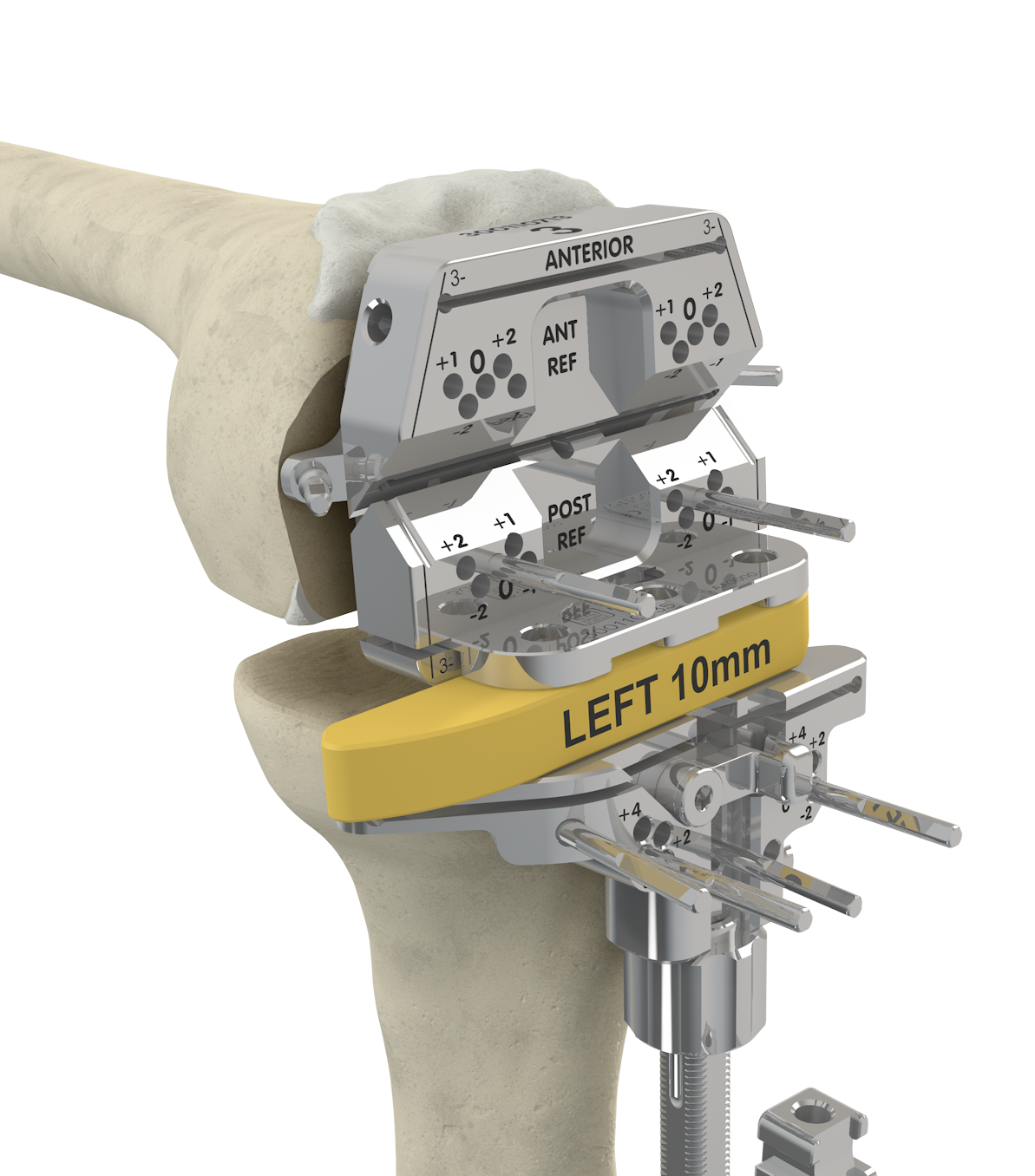KINEMATIC ALIGNMENT
Kinematic alignment
The K-MOD system has undergone further development and includes the new additional KMOD KA series of instruments, which makes it possible to use the kinematic alignment technique for a total knee replacement.
Kinematic alignment (KA) is an alternative philosophy for aligning a total knee replacement (TKR) that aims to recreate the articular kinematics of the patient’s native knee; the technique can therefore be considered specific to the individual patient.
Kinematic alignment is an option available to orthopaedic surgeons to minimise the risk of pain arising from a total knee replacement. Indeed, many scientific studies show that a significant percentage of patients who undergo mechanical alignment are still dissatisfied due to pain, instability or stiffness in the joint.


Kinematic alignment is therefore based on the following principles:
- Restoration of the native alignment of the patient, knee and leg
- Restoration of the native femoral-tibial joint lines of the knee
- Restoration of the native laxity of the knee


The kinematic alignment technique therefore minimises the need for capsular, collateral, or posterior cruciate ligament release, and is essentially based on bone resection.
The importance of this is highlighted by the caliper, which is used, for example, to measure the distal and posterior femoral resection in order to restore the bone using a prosthesis with an identical thickness






